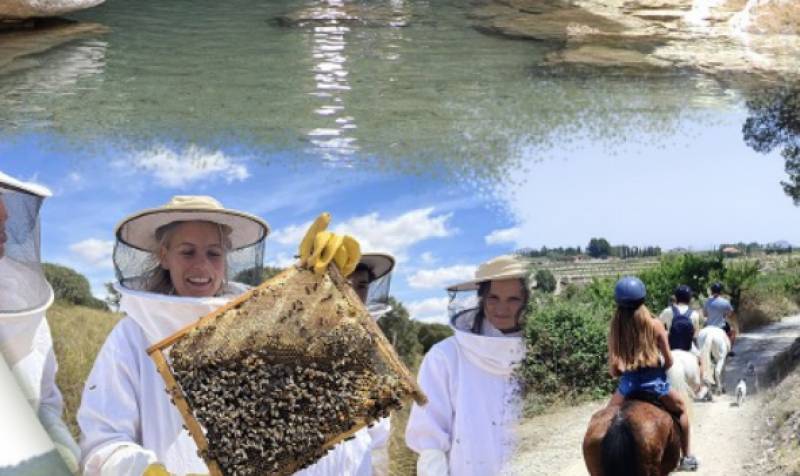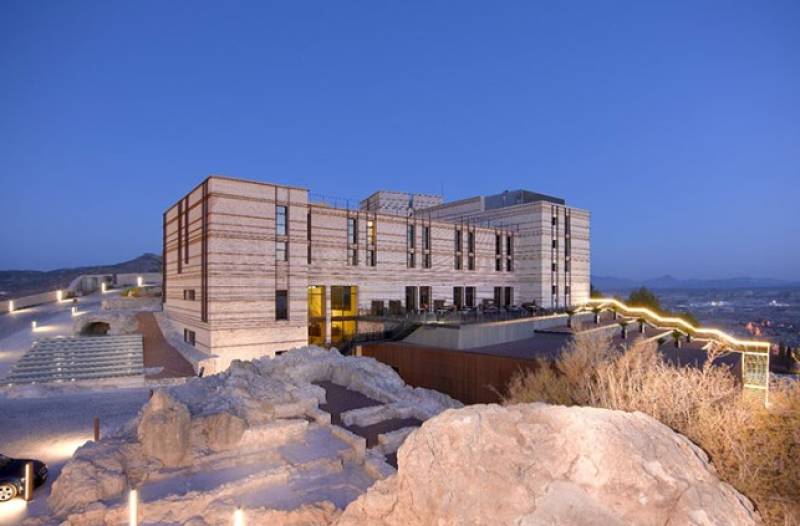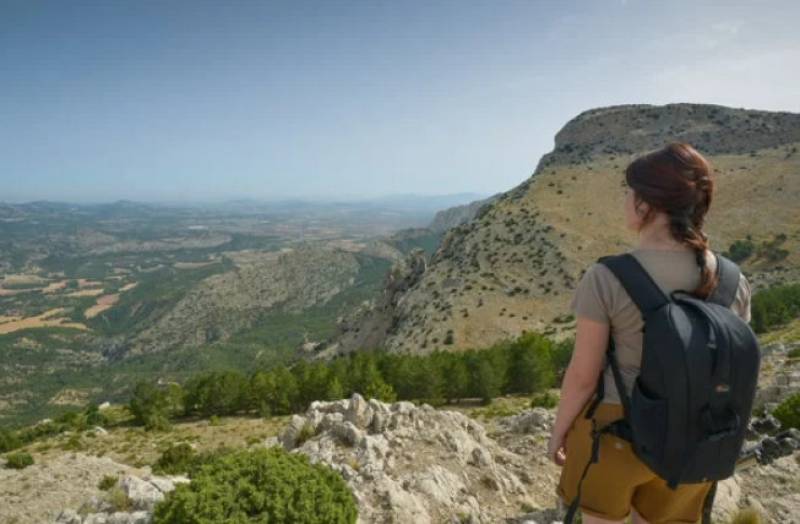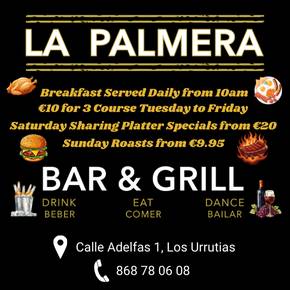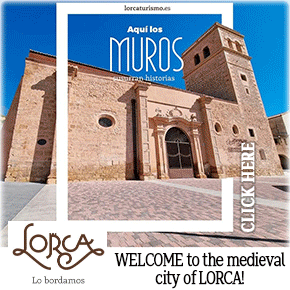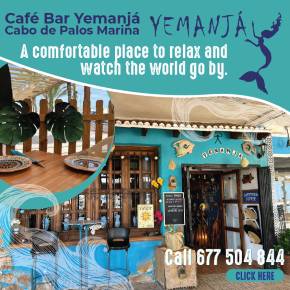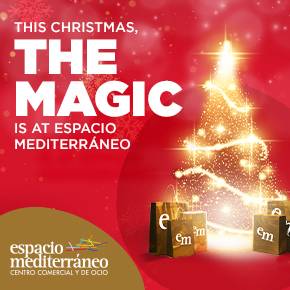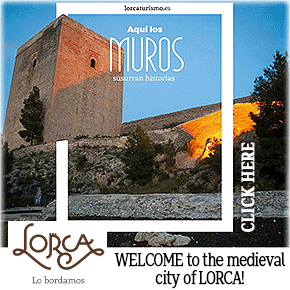

Guidelines for submitting articles to San Pedro del Pinatar Today
Hello, and thank you for choosing San Pedro del Pinatar.Today to publicise your organisation’s info or event.
San Pedro del Pinatar Today is a website set up by Murcia Today specifically for residents of the urbanisation in Southwest Murcia, providing news and information on what’s happening in the local area, which is the largest English-speaking expat area in the Region of Murcia.
When submitting text to be included on San Pedro del Pinatar Today, please abide by the following guidelines so we can upload your article as swiftly as possible:
Send an email to editor@spaintodayonline.com or contact@murciatoday.com
Attach the information in a Word Document or Google Doc
Include all relevant points, including:
Who is the organisation running the event?
Where is it happening?
When?
How much does it cost?
Is it necessary to book beforehand, or can people just show up on the day?
…but try not to exceed 300 words
Also attach a photo to illustrate your article, no more than 100kb

10 reasons to visit Jumilla in northern Murcia
History, wine, breathtaking landscapes, a medieval castle and some of the most widely acclaimed Spanish wine!
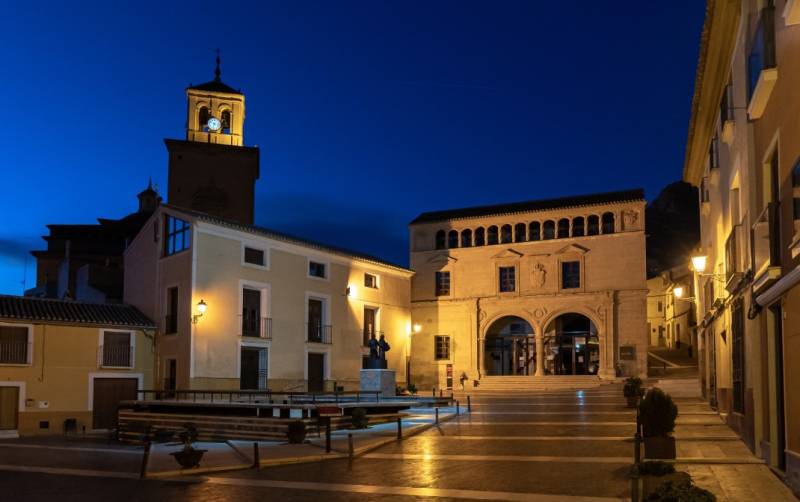 Jumilla, which lies in the “Altiplano” area in the north of the Region of Murcia, is one of the many towns in Spain which are full of attractions for visited but which are too often ignored in favour of other destinations closer to the coast.
Jumilla, which lies in the “Altiplano” area in the north of the Region of Murcia, is one of the many towns in Spain which are full of attractions for visited but which are too often ignored in favour of other destinations closer to the coast.
It’s true that it is a fair distance from the nearest beaches (between 75 and 90 minutes by car from the Vega Baja and most of the Costa Cálida), but it’s one of those places that are worth exploring, savouring the difference between the coast and inland areas. There are no palm trees here and very few cacti, and the wide plains and the mountains somehow seem to make the sky bigger than elsewhere!
If that sounds fanciful, come and take a look!
Wine!
 There are many attractions in Jumilla for all the family, but it is for the local DOP Jumilla wine labels that the town is best known. Jumilla’s speciality is wine made from the red Monastrell grape, and all of the 17 “bodegas” affiliated to the Wine Route offer guided tours of the production facilities and vineyards as well as tastings throughout the year. It’s hard to visit drop in purchasing a bottle or two to remember your visit!
There are many attractions in Jumilla for all the family, but it is for the local DOP Jumilla wine labels that the town is best known. Jumilla’s speciality is wine made from the red Monastrell grape, and all of the 17 “bodegas” affiliated to the Wine Route offer guided tours of the production facilities and vineyards as well as tastings throughout the year. It’s hard to visit drop in purchasing a bottle or two to remember your visit!
Alternatively, you might want to book in for lunch, or take advantage of the annual early summer “"Música Entre Vinos" season, when fine dinners are held in the wineries and live music accompanies guests.
A wonderful example of a typical medieval fortress
 The order to build Jumilla castle was given by the Marquis of Villena in 1461, when he chose the hilltop site of a previous Moorish fortification, and today it has been restored to close to its original condition. Unless you have permission to drive up the hill you’ll have to climb the Camino del Subidor, but the effort is worthwhile as you admire the stupendous views out over the town and the countryside beyond!
The order to build Jumilla castle was given by the Marquis of Villena in 1461, when he chose the hilltop site of a previous Moorish fortification, and today it has been restored to close to its original condition. Unless you have permission to drive up the hill you’ll have to climb the Camino del Subidor, but the effort is worthwhile as you admire the stupendous views out over the town and the countryside beyond!
Retreat to the peace of the monastery in the mountains of Santa Ana
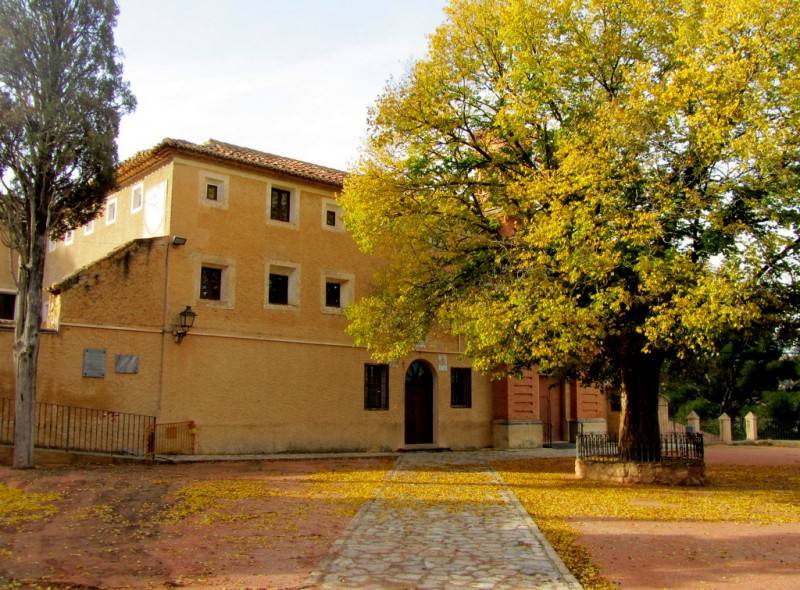 Practically all the natives of Jumilla enjoy their visits to the monastery of Santa Ana, which stands in the range of hills and mountains of the same name a few kilometres south of the town. A hugely popular annual pilgrimage “romería” procession arrives here every May as the sculpture of Christ Tied to the Column (by Francisco Salzillo) is carried back to the monastery, and once there is accompanies other works of art in a collection which contains museum pieces from all over the world.
Practically all the natives of Jumilla enjoy their visits to the monastery of Santa Ana, which stands in the range of hills and mountains of the same name a few kilometres south of the town. A hugely popular annual pilgrimage “romería” procession arrives here every May as the sculpture of Christ Tied to the Column (by Francisco Salzillo) is carried back to the monastery, and once there is accompanies other works of art in a collection which contains museum pieces from all over the world.
In addition, a short walk through the pine forests away is Coimbra del Barranco Ancho, an archaeological site dating back over 2,200 years.
A remarkable museum named after a prolific amateur archaeologist
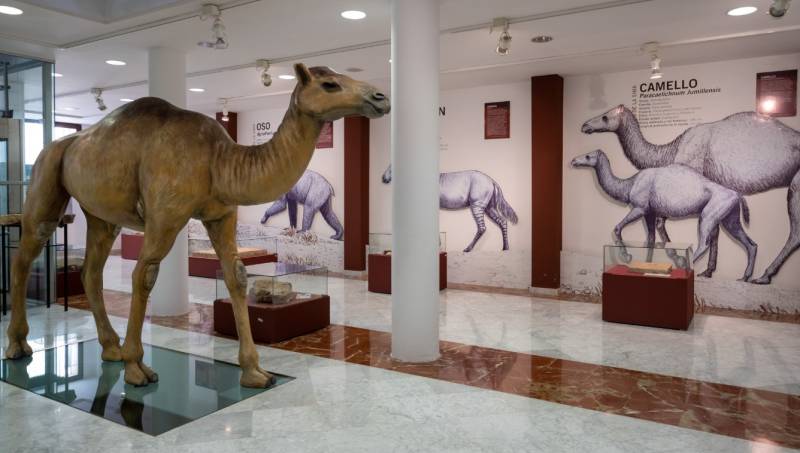 Jerónimo Molina García was a teacher by trade but once he settled in Jumilla he soon became an expert in archaeology and local history, and his legacy in the town is a museum collection so large it is housed in two separate buildings. The archaeological museum is in the beautiful Plaza de Arriba, while the Ethnography and Natural Science sections are in the Plaza de la Constitución, containing an important collection of fossils, minerals and, at the Hoya de la Sima site, fossilized footprints belonging to animals which inhabited the area tens of thousands of years ago!
Jerónimo Molina García was a teacher by trade but once he settled in Jumilla he soon became an expert in archaeology and local history, and his legacy in the town is a museum collection so large it is housed in two separate buildings. The archaeological museum is in the beautiful Plaza de Arriba, while the Ethnography and Natural Science sections are in the Plaza de la Constitución, containing an important collection of fossils, minerals and, at the Hoya de la Sima site, fossilized footprints belonging to animals which inhabited the area tens of thousands of years ago!
Old streets oozing history
 Walking through the streets of the old town centre you’re struck by the coast of arms emblazoned on façades, the magnificent balconies and the wrought ironwork, all of which serve as reminders of Jumilla’s heritage. Among the gems are the churches of Santiago and El Salvador and the ornamental gardens of La Estacada and Rey Don Pedro. A special mention goes to the Teatro Vico, a modernist building dating from the late 19th century and designed in the Italian style of the time by Justo Millán y Espinosa, who was also responsible for the Teatro Romea in the centre of Murcia.
Walking through the streets of the old town centre you’re struck by the coast of arms emblazoned on façades, the magnificent balconies and the wrought ironwork, all of which serve as reminders of Jumilla’s heritage. Among the gems are the churches of Santiago and El Salvador and the ornamental gardens of La Estacada and Rey Don Pedro. A special mention goes to the Teatro Vico, a modernist building dating from the late 19th century and designed in the Italian style of the time by Justo Millán y Espinosa, who was also responsible for the Teatro Romea in the centre of Murcia.
The Passion of Holy Week
 The best-known Easter Week processions in the Region each have their own character: in Lorca there are the spectacularly colourful biblical parades, in Cartagena the military precision of the penitents as they march through the city centre, in Murcia the throwing of sweets to the children in the crowds, but in Jumilla the keynote is the passion with which the theme of penitence is treated. The narrow streets are filled with the scents of incense and burning wax and the sounds of cornets and drums as a medieval atmosphere takes hold of the town (unsurprising, since there are records of the processions being held as long ago as the early 15th century).
The best-known Easter Week processions in the Region each have their own character: in Lorca there are the spectacularly colourful biblical parades, in Cartagena the military precision of the penitents as they march through the city centre, in Murcia the throwing of sweets to the children in the crowds, but in Jumilla the keynote is the passion with which the theme of penitence is treated. The narrow streets are filled with the scents of incense and burning wax and the sounds of cornets and drums as a medieval atmosphere takes hold of the town (unsurprising, since there are records of the processions being held as long ago as the early 15th century).
Unique and unusual buildings
 Although the town is not flooded with Modernist architecture, there is an outstanding example of the style on Calle Cánovas de Castillo. Especially impressive are the first-floor balcony and the floral ironwork on the façade, and close at hand is the Town Hall, where more splendid ironwork can be seen on the balcony and the interior courtyard is a joy to behold.
Although the town is not flooded with Modernist architecture, there is an outstanding example of the style on Calle Cánovas de Castillo. Especially impressive are the first-floor balcony and the floral ironwork on the façade, and close at hand is the Town Hall, where more splendid ironwork can be seen on the balcony and the interior courtyard is a joy to behold.
In a very different way, the “Casón” is worth a short visit. This is a very small structure but is probably the oldest in the Region of Murcia to still boast its original roof, and it was constructed by the Romans as a mausoleum some 1,700 years ago.
Roam the mountains and countryside of northern Murcia!
 If you’re one of those looking for active and adventure tourism, the countryside around Jumilla is full of opportunities to explore on foot or on two wheels. In the Sierra de La Cingla and the Sierra de la Pedrera, among the natural beauty of the mountains there are examples of prehistoric rock art which have been declared World Heritage Sites by UNESCO, and fossils from around 7 million years ago. Even more tempting are the mountains of Sierra del Carche, where all kinds of sporting activities are held including climbing, caving, potholing, hiking and hang-gliding.
If you’re one of those looking for active and adventure tourism, the countryside around Jumilla is full of opportunities to explore on foot or on two wheels. In the Sierra de La Cingla and the Sierra de la Pedrera, among the natural beauty of the mountains there are examples of prehistoric rock art which have been declared World Heritage Sites by UNESCO, and fossils from around 7 million years ago. Even more tempting are the mountains of Sierra del Carche, where all kinds of sporting activities are held including climbing, caving, potholing, hiking and hang-gliding.
A menu to leave you hungry for more!
 For gastronomes one of the must-try dishes in Jumilla is the local “gazpacho jumillano”, which has little to do with the version of gazpacho most of us know! This is a dish of Jewish origin and consists of a flour pancake base which holds a mix of game and mountain snails cooked in a rich sauce. In winter, the “gachamiga” and meatballs in broth are guaranteed to warm you up after a day in the mountains or walking around town, perhaps preceded by fried goat cheese or potato pasties and washed down, it goes without saying by a glass or two of the delicious Jumilla wine.
For gastronomes one of the must-try dishes in Jumilla is the local “gazpacho jumillano”, which has little to do with the version of gazpacho most of us know! This is a dish of Jewish origin and consists of a flour pancake base which holds a mix of game and mountain snails cooked in a rich sauce. In winter, the “gachamiga” and meatballs in broth are guaranteed to warm you up after a day in the mountains or walking around town, perhaps preceded by fried goat cheese or potato pasties and washed down, it goes without saying by a glass or two of the delicious Jumilla wine.
Soak yourself in wine!
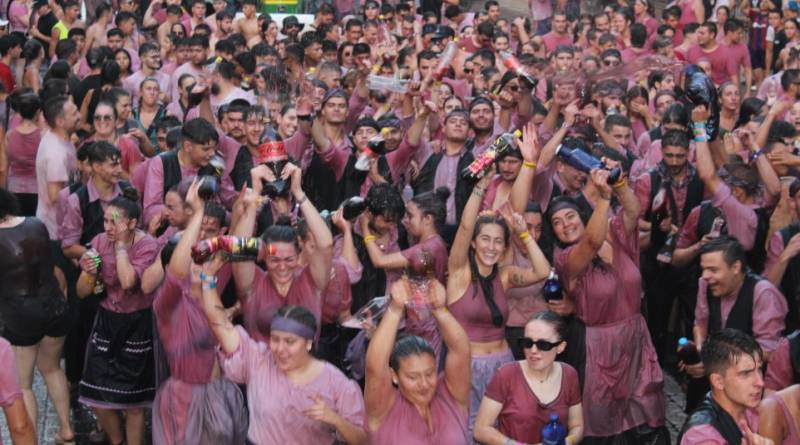 The main local fiestas in Jumilla are held in late August to coincide with the beginning of the grape harvest, and the best-known event is the Cabalgata del Vino on the final Saturday. There is plenty of wine in evidence here, but, oddly, not much of it ends up being drunk, as the parade becomes a wine battle in the streets! The advice here is to wear an old white t-shirt, which will inevitably be stained dark pink by the end of the battle as tens of thousands of litres of wine are used as friendly weapons rather than as an accompaniment to fine dining!
The main local fiestas in Jumilla are held in late August to coincide with the beginning of the grape harvest, and the best-known event is the Cabalgata del Vino on the final Saturday. There is plenty of wine in evidence here, but, oddly, not much of it ends up being drunk, as the parade becomes a wine battle in the streets! The advice here is to wear an old white t-shirt, which will inevitably be stained dark pink by the end of the battle as tens of thousands of litres of wine are used as friendly weapons rather than as an accompaniment to fine dining!
For more local information contact the tourist office of Jumilla or visit the home page of Jumilla Today.
Oficina de Turismo Jumilla
The tourist office in the centre of Jumilla is easily found by driving straight into the centre of the town along the Avenida de Murcia and following the signposts. The tourist office is alongside the Parque de Don Albano Martínez Molina, where there are a number of parking spaces.
Jumilla, in the north of the Region of Murcia, has become internationally famous over recent decades due to the quality of the wines produced in the municipality, and wine tourism has begun to attract visitors from other parts of Spain and the rest of Europe.
The tourist office is happy to provide a range of maps and leaflets showing the different bodegas which can be visited within the municipality. Some of these form part of the Rutas del Vino de Jumilla, the Jumilla wine route, and can either be visited as a guided tour or sell their produce directly to the public.(see feed below for more details)
However, the town and the surrounding countryside have plenty of other attractions for visitors, and the popularity of Jumilla wines is leading more and more people to discover other facets of the tenth largest municipality in Spain.

These include the spectacular countryside and birdlife in the Sierra del Carche, the historic remains which range from cave paintings and a Roman mausoleum to the castle, the Iglesia de Santiago, the Town Hall and the Teatro Vico, and the gastronomy: rich stews are accompanied not only by the wines of the area but also by Jumilla pears, which also enjoy Denomination of Origin status.
Tourism in Jumilla is not as seasonal as it is in the coastal areas of the Region of Murcia, but the town is at its liveliest during the fiestas in Holy Week and the August Fair, which incorporates the grape harvest celebrations and the Moors and Christians parades.
The Altiplano of the Region of Murcia, which consists of the municipalities of Jumilla and Yecla, is only just over an hour by car from the Mar Menor, Cartagena, Mazarrón, Torrevieja and Alicante, and anyone wishing to visit real inland Spain and world-class wineries is advised to include Jumilla in their schedule.
Opening hours
Summer
Tuesday to Friday from 10am to 2pm
Saturday and Sunday 10am to 2pm
Monday closed
Winter
Tuesday to Friday from 10am to 2pm and 5pm to 7pm
Saturday and Sunday 10am to 2pm
Monday closed
Click for full information about visiting the Jumilla municipality and its wine bodegas: Jumilla section









